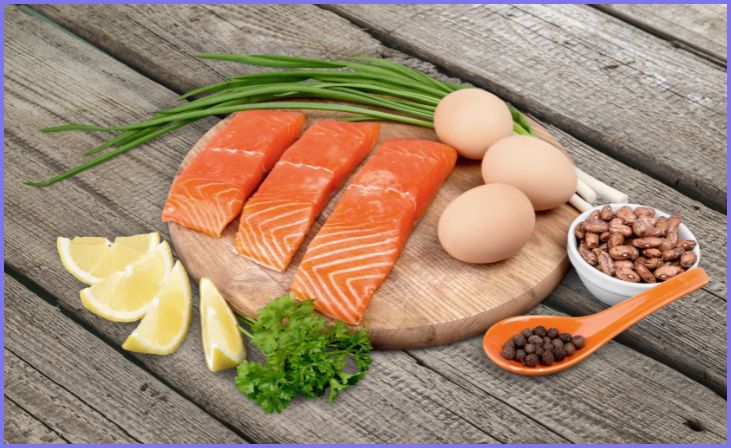Turning 50 doesn’t mean it’s time to hang up your workout gear. In fact, it’s never too late to focus on building muscle and improving your overall fitness. With the right approach, you can still achieve significant muscle growth and strength gains well into your 50s and beyond. Here are nine tips to help you boost muscle growth after 50:
1. Prioritize Protein Intake

As you age, your body becomes less efficient at utilizing protein to build and repair muscle tissue. Therefore, it’s essential to increase your protein intake to support muscle growth. Aim for a minimum of 1.2 to 2 grams of protein per kilogram of body weight per day, focusing on high-quality sources such as lean meats, poultry, fish, eggs, dairy, and plant-based sources like beans and legumes.
2. Lift Heavy
Strength training is crucial for building muscle at any age, but it becomes even more important as you get older. Incorporate compound exercises such as squats, deadlifts, bench presses, and rows into your routine, and gradually increase the weight you lift over time. Aim to work each major muscle group at least twice a week with challenging weights to stimulate muscle growth.
3. Focus on Form
While lifting heavy weights is important, proper form is essential to prevent injuries, especially as you age. Take the time to learn the correct technique for each exercise, and don’t hesitate to seek guidance from a qualified personal trainer if needed. Pay attention to your body and avoid pushing through pain or discomfort, as this can lead to overuse injuries.
4. Incorporate Resistance Training

In addition to traditional strength training with weights, incorporating resistance bands and bodyweight exercises into your routine can help improve muscle tone, strength, and stability. Resistance bands are particularly useful for targeting smaller muscle groups and improving joint mobility, making them a valuable addition to any workout program.
5. Prioritize Recovery
Muscle growth occurs during periods of rest, so it’s essential to prioritize recovery alongside your training. Aim for at least 7-9 hours of quality sleep each night to support muscle repair and recovery. Additionally, incorporate rest days into your routine to allow your muscles to recover fully between workouts. Active recovery activities such as walking, swimming, or yoga can also help promote blood flow and reduce muscle soreness.
6. Stay Hydrated
Proper hydration is essential for overall health and muscle function. Dehydration can impair performance and recovery, so make sure to drink plenty of water throughout the day, especially before, during, and after exercise. Aim to consume at least 8-10 glasses of water daily, and adjust your intake based on factors such as activity level, climate, and sweat rate.
7. Eat a Balanced Diet

In addition to prioritizing protein intake, focus on consuming a balanced diet rich in whole foods to support muscle growth and overall health. Include plenty of fruits, vegetables, whole grains, and healthy fats in your meals to provide essential nutrients and fuel your workouts. Avoid excessive processed foods, sugary snacks, and alcohol, as these can hinder muscle recovery and contribute to inflammation.
8. Listen to Your Body
As you age, it’s important to listen to your body and adjust your training accordingly. Pay attention to signs of fatigue, pain, or discomfort, and don’t push yourself beyond your limits. Modify exercises as needed to accommodate any existing injuries or mobility issues, and consider incorporating activities such as yoga or Pilates to improve flexibility and joint health.
9. Be Consistent
Consistency is key when it comes to building muscle, especially after 50. Make exercise a regular part of your routine, and commit to sticking with it over the long term. Set realistic goals, track your progress, and celebrate your achievements along the way. Remember that building muscle takes time and patience, so stay focused, stay positive, and keep pushing towards your goals.
In conclusion, building muscle after 50 is entirely achievable with the right approach. By prioritizing protein intake, lifting heavy, focusing on form, incorporating resistance training, prioritizing recovery, staying hydrated, eating a balanced diet, listening to your body, and being consistent, you can boost muscle growth and strength well into your 50s and beyond. With dedication and perseverance, you can enjoy a strong, healthy, and active lifestyle at any age.







